
A History of the Harmonica
Call it the French harp, the harp or the harmonica, but whatever you do, call it an instrument with Chinese ancestry.
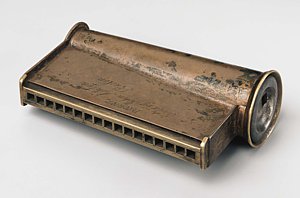 That pocket-stored staple of bluesmen, cowboys, rockers and comedy acts is based on the sheng, a gourd and reed instrument through which musicians blew or drew air in order to create tones as many as 5,000 years ago, possibly in the court of Empress Nyu-kwa.
That pocket-stored staple of bluesmen, cowboys, rockers and comedy acts is based on the sheng, a gourd and reed instrument through which musicians blew or drew air in order to create tones as many as 5,000 years ago, possibly in the court of Empress Nyu-kwa.
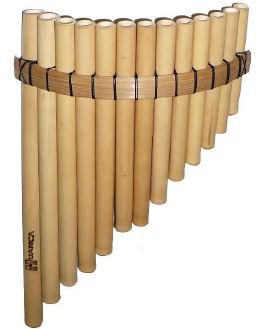
Like its descendants, the sheng later found its way to other parts of the world, finally to evolve into something close to its current form in 19th century Germany. Though its design often is credited to Christian Friedrich Ludwig Buschmann, who worked on a similar instrument in 1821, variations were seen around Europe in the same era.
Buschmann?s ?aura? or ?mundaeoline,? as he called it, probably was invented as a tuning aid, with 15 pitch pipes arranged in a four-inch-square. But allow songs to be played on it though it may have done, the unwieldy box only permitted the player to blow into it, not draw sound out of it.

In 1826, Joseph Richter saw a better way and came up with a method of tuning that would be named after him, but more importantly, the Bohemian-born craftsman also is credited with devising the instrument?s blow-and-draw mechanism. He created a 10-hole, diatonic harmonica he named the ?vamper? that had two reed plates, one atop the other, that would produce consistent tones when blowing or drawing air over the reeds. And it was only four inches wide and one inch high: the perfect portable instrument.
Soon the little gadget with the unusual sound was being copied by various craftsmen and musicians, and in the 1850s, a German clockmaker named Matthias Hohner refined the art.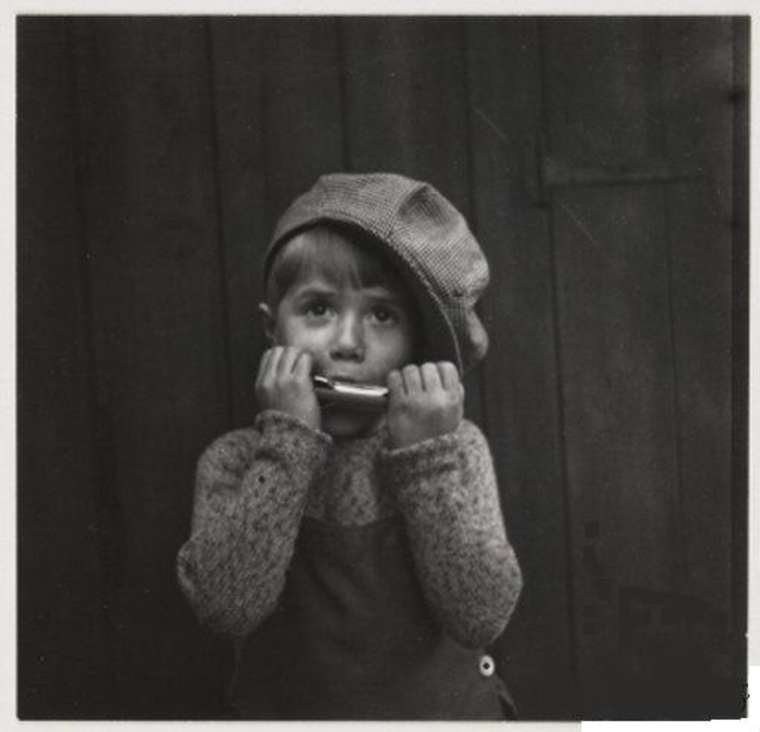 Having manufactured what he called ?mouth organs? in his spare time with his wife and one worker, Hohner became the first mass producer of the instruments, and when family members emigrated to the United States, Hohner gave them harmonicas to take along.
Having manufactured what he called ?mouth organs? in his spare time with his wife and one worker, Hohner became the first mass producer of the instruments, and when family members emigrated to the United States, Hohner gave them harmonicas to take along.
They caught on at once, beloved by troops in both armies, to whom music was so important during the Civil War; after the war, harmonicas were bought by the thousand in stores and through mail order companies nationwide. By 1877, Hohner was selling 700,000 harmonicas a year, complete with instruction books.
Small and inexpensive, the harmonica became a standard instrument for musicians in the emerging blues and folk genres, and musicologist Harold Courlander later called it ?probably the most ubiquitous of Negro folk instruments.? Leave it to those bluesmen to develop styles of their own. Some learned to vary the sound the harp created by placing their hands over it; others used varied techniques to imitate other instruments or sounds.
By the early 20th century, the harmonica was a staple of ?hillbilly music? as well as blues and in jug bands. Little Walter Jacobs used it with a ?bullet? microphone; cupped his hands to make its sound distorted, on the order of a saxophone. Famed for his King Biscuit Hour radio program, Sonny Boy Williamson became renowned as a blues harmonica virtuoso, and after the blues moved to Chicago, Muddy Waters? playing style was copied the world over.
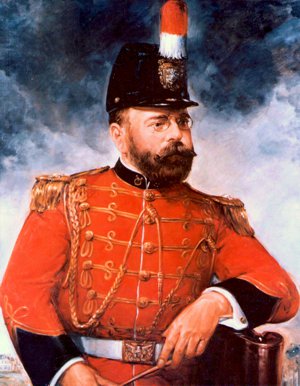 In 1927, John Philip Sousa, the March King who conducted the Philadelphia Harmonica Band, told Popular Science magazine, ?This instrument is the foundation for a musical career . . . and many boys and girls who are now learning music on the harmonica will step into the great symphony orchestras and bands of our country some day.?
In 1927, John Philip Sousa, the March King who conducted the Philadelphia Harmonica Band, told Popular Science magazine, ?This instrument is the foundation for a musical career . . . and many boys and girls who are now learning music on the harmonica will step into the great symphony orchestras and bands of our country some day.?
By the 1930s, classical pieces composed for the harmonica by the likes of Ralph Vaughn Williams were performed by musicians such as Larry Adler.
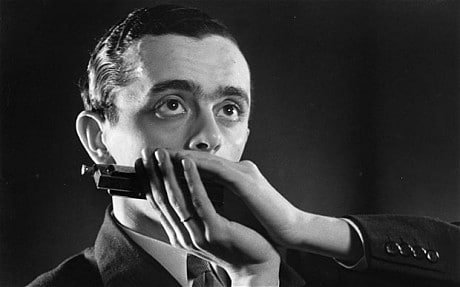 World War II proved a problem: Harmonicas remained a favorite of troops, yet not only were the metal and wood used to make harmonicas in short supply but the world?s great harmonica makers were located in enemy territory: Germany and Japan. The response came from Finn Harkon Magnus, a Dutch-American entrepreneur, who developed the molded-plastic harmonica that later was passed out by the American Red Cross to U.S. troops as a morale builder.
World War II proved a problem: Harmonicas remained a favorite of troops, yet not only were the metal and wood used to make harmonicas in short supply but the world?s great harmonica makers were located in enemy territory: Germany and Japan. The response came from Finn Harkon Magnus, a Dutch-American entrepreneur, who developed the molded-plastic harmonica that later was passed out by the American Red Cross to U.S. troops as a morale builder.
Into the rock and roll, rhythm and blues and folk music era the harmonica went without demur, played by the likes of John Lennon, Stevie Wonder, Bob Dylan and Bruce Springsteen, as well as countless other performers.
Now harmonicists like Philip Achille win jazz competitions worldwide, Howard Levy is regarded as a pioneer of the ?over-blow? and John Popper simply is famed for his powerful playing. You Tube has its share of harmonica symphonies and every child who has watched ?Sesame Street? knows that before a sunny day comes the sound of a harmonica.
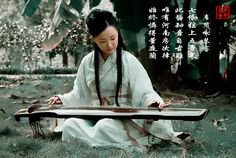 Not bad for a little pocket-stored instrument with the Chinese ancestry.
Not bad for a little pocket-stored instrument with the Chinese ancestry.
Famous harmonicists
The harmonica has been found at the lips of famous people since it became popular in this country in the mid-19th century.
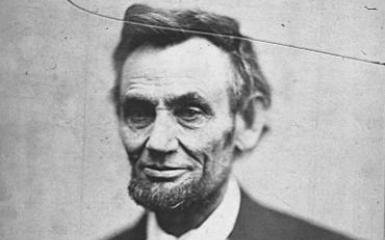
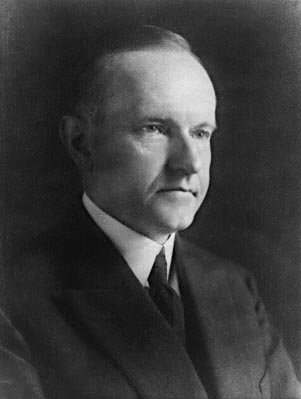 At least two presidents played, Abraham Lincoln having kept one in his pocket during the Civil War, Calvin Coolidge having kept one heaven knows where because Calvin Coolidge did not say much. In the last generation, Speaker of the House Jim Wright was an accomplished harmonica player.
At least two presidents played, Abraham Lincoln having kept one in his pocket during the Civil War, Calvin Coolidge having kept one heaven knows where because Calvin Coolidge did not say much. In the last generation, Speaker of the House Jim Wright was an accomplished harmonica player.
Anyone who has seen a cowboy movie knows the harmonica made its way west, into the hands of good guys and bad guys alike: Wyatt Earp played, as did Billy the Kid.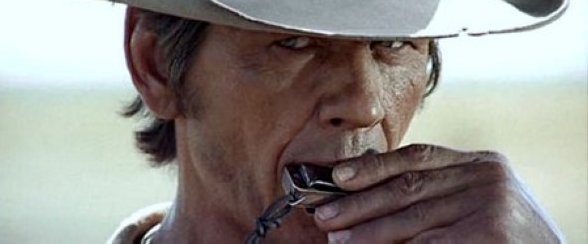
So too did the mouth organ make its mark in sports.
Forget the infamous ?Harmonica Incident of 1964,? when New York Yankees manager Yogi Berra nearly came to blows with harmonica-playing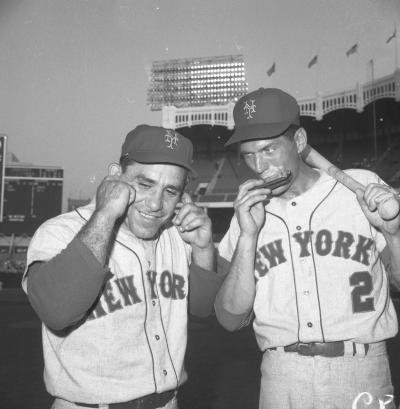 utility infielder Phil Linz aboard the team bus. Remember instead that St. Louis Cardinals great Stan Musial serenaded fellow inductees of the Baseball Hall of Fame with harmonica solos and played ?Take Me Out to the Ballgame? during seventh-inning stretches.
utility infielder Phil Linz aboard the team bus. Remember instead that St. Louis Cardinals great Stan Musial serenaded fellow inductees of the Baseball Hall of Fame with harmonica solos and played ?Take Me Out to the Ballgame? during seventh-inning stretches.
Carl Erskine, a pitcher for the Brooklyn and Los Angeles Dodgers, still entertains people with his harp. He is 88 years old.
Harmonica play is not limited to male sports stars, either. Babe Didrikson Zaharias, possibly the most versatile female athlete ever, also was a devoted harmonicist.
There are the entertainers too. Hugh Laurie, Harry Dean Stanton and Bruce Willis, each of whom is a fine musician as well as actor, play the harmonica.
And then there were and are the professionals: thousands of them, in every genre of music worldwide.
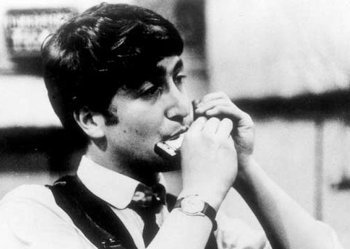
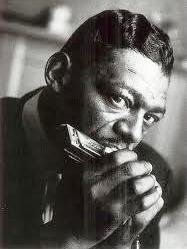
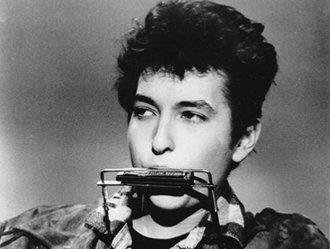
One of the most famous was John Lennon, who was known to be argumentative about the difference between a harmonica and a mouth organ, as he saw it: a chromatic instrument was a mouth organ, a diatonic instrument was a harmonica and that was that.
What is less known about Lennon was that if the harmonica was not the first instrument he ever played, it was close to it, having been gifted with one in the early 1950s. So the nice story that he was taught to play by Delbert McClinton of ?Hey, Baby? fame was just that: a nice story.
Finally, one of the greatest multimedia entertainers of all time also played the harmonica.
Having performed a rendition of ?St. Louis Blues? on the piano three months before, Mickey Mouse played a harmonica ? in duet with Minnie Mouse ? in the film ?Mickey Cuts Up,? released November, 1931. He never put the harp down, and it was featured again in the 1999 Christmas film, ?The Gift of the Magi.?
Why?... Because he liked it.
For a complete list of musicians noted for their harmonica play, go to: https://en.wikipedia.org/wiki/List_of_harmonicists
 That pocket-stored staple of bluesmen, cowboys, rockers and comedy acts is based on the sheng, a gourd and reed instrument through which musicians blew or drew air in order to create tones as many as 5,000 years ago, possibly in the court of Empress Nyu-kwa.
That pocket-stored staple of bluesmen, cowboys, rockers and comedy acts is based on the sheng, a gourd and reed instrument through which musicians blew or drew air in order to create tones as many as 5,000 years ago, possibly in the court of Empress Nyu-kwa.

Like its descendants, the sheng later found its way to other parts of the world, finally to evolve into something close to its current form in 19th century Germany. Though its design often is credited to Christian Friedrich Ludwig Buschmann, who worked on a similar instrument in 1821, variations were seen around Europe in the same era.
Buschmann?s ?aura? or ?mundaeoline,? as he called it, probably was invented as a tuning aid, with 15 pitch pipes arranged in a four-inch-square. But allow songs to be played on it though it may have done, the unwieldy box only permitted the player to blow into it, not draw sound out of it.

Soon the little gadget with the unusual sound was being copied by various craftsmen and musicians, and in the 1850s, a German clockmaker named Matthias Hohner refined the art.
 Having manufactured what he called ?mouth organs? in his spare time with his wife and one worker, Hohner became the first mass producer of the instruments, and when family members emigrated to the United States, Hohner gave them harmonicas to take along.
Having manufactured what he called ?mouth organs? in his spare time with his wife and one worker, Hohner became the first mass producer of the instruments, and when family members emigrated to the United States, Hohner gave them harmonicas to take along.
They caught on at once, beloved by troops in both armies, to whom music was so important during the Civil War; after the war, harmonicas were bought by the thousand in stores and through mail order companies nationwide. By 1877, Hohner was selling 700,000 harmonicas a year, complete with instruction books.
Small and inexpensive, the harmonica became a standard instrument for musicians in the emerging blues and folk genres, and musicologist Harold Courlander later called it ?probably the most ubiquitous of Negro folk instruments.? Leave it to those bluesmen to develop styles of their own. Some learned to vary the sound the harp created by placing their hands over it; others used varied techniques to imitate other instruments or sounds.
By the early 20th century, the harmonica was a staple of ?hillbilly music? as well as blues and in jug bands. Little Walter Jacobs used it with a ?bullet? microphone; cupped his hands to make its sound distorted, on the order of a saxophone. Famed for his King Biscuit Hour radio program, Sonny Boy Williamson became renowned as a blues harmonica virtuoso, and after the blues moved to Chicago, Muddy Waters? playing style was copied the world over.
 In 1927, John Philip Sousa, the March King who conducted the Philadelphia Harmonica Band, told Popular Science magazine, ?This instrument is the foundation for a musical career . . . and many boys and girls who are now learning music on the harmonica will step into the great symphony orchestras and bands of our country some day.?
In 1927, John Philip Sousa, the March King who conducted the Philadelphia Harmonica Band, told Popular Science magazine, ?This instrument is the foundation for a musical career . . . and many boys and girls who are now learning music on the harmonica will step into the great symphony orchestras and bands of our country some day.?
By the 1930s, classical pieces composed for the harmonica by the likes of Ralph Vaughn Williams were performed by musicians such as Larry Adler.
 World War II proved a problem: Harmonicas remained a favorite of troops, yet not only were the metal and wood used to make harmonicas in short supply but the world?s great harmonica makers were located in enemy territory: Germany and Japan. The response came from Finn Harkon Magnus, a Dutch-American entrepreneur, who developed the molded-plastic harmonica that later was passed out by the American Red Cross to U.S. troops as a morale builder.
World War II proved a problem: Harmonicas remained a favorite of troops, yet not only were the metal and wood used to make harmonicas in short supply but the world?s great harmonica makers were located in enemy territory: Germany and Japan. The response came from Finn Harkon Magnus, a Dutch-American entrepreneur, who developed the molded-plastic harmonica that later was passed out by the American Red Cross to U.S. troops as a morale builder.
Into the rock and roll, rhythm and blues and folk music era the harmonica went without demur, played by the likes of John Lennon, Stevie Wonder, Bob Dylan and Bruce Springsteen, as well as countless other performers.
Now harmonicists like Philip Achille win jazz competitions worldwide, Howard Levy is regarded as a pioneer of the ?over-blow? and John Popper simply is famed for his powerful playing. You Tube has its share of harmonica symphonies and every child who has watched ?Sesame Street? knows that before a sunny day comes the sound of a harmonica.
 Not bad for a little pocket-stored instrument with the Chinese ancestry.
Not bad for a little pocket-stored instrument with the Chinese ancestry.Famous harmonicists
The harmonica has been found at the lips of famous people since it became popular in this country in the mid-19th century.

 At least two presidents played, Abraham Lincoln having kept one in his pocket during the Civil War, Calvin Coolidge having kept one heaven knows where because Calvin Coolidge did not say much. In the last generation, Speaker of the House Jim Wright was an accomplished harmonica player.
At least two presidents played, Abraham Lincoln having kept one in his pocket during the Civil War, Calvin Coolidge having kept one heaven knows where because Calvin Coolidge did not say much. In the last generation, Speaker of the House Jim Wright was an accomplished harmonica player.
Anyone who has seen a cowboy movie knows the harmonica made its way west, into the hands of good guys and bad guys alike: Wyatt Earp played, as did Billy the Kid.

So too did the mouth organ make its mark in sports.
Forget the infamous ?Harmonica Incident of 1964,? when New York Yankees manager Yogi Berra nearly came to blows with harmonica-playing
 utility infielder Phil Linz aboard the team bus. Remember instead that St. Louis Cardinals great Stan Musial serenaded fellow inductees of the Baseball Hall of Fame with harmonica solos and played ?Take Me Out to the Ballgame? during seventh-inning stretches.
utility infielder Phil Linz aboard the team bus. Remember instead that St. Louis Cardinals great Stan Musial serenaded fellow inductees of the Baseball Hall of Fame with harmonica solos and played ?Take Me Out to the Ballgame? during seventh-inning stretches.
Carl Erskine, a pitcher for the Brooklyn and Los Angeles Dodgers, still entertains people with his harp. He is 88 years old.
Harmonica play is not limited to male sports stars, either. Babe Didrikson Zaharias, possibly the most versatile female athlete ever, also was a devoted harmonicist.
There are the entertainers too. Hugh Laurie, Harry Dean Stanton and Bruce Willis, each of whom is a fine musician as well as actor, play the harmonica.
And then there were and are the professionals: thousands of them, in every genre of music worldwide.



What is less known about Lennon was that if the harmonica was not the first instrument he ever played, it was close to it, having been gifted with one in the early 1950s. So the nice story that he was taught to play by Delbert McClinton of ?Hey, Baby? fame was just that: a nice story.
Finally, one of the greatest multimedia entertainers of all time also played the harmonica.
Having performed a rendition of ?St. Louis Blues? on the piano three months before, Mickey Mouse played a harmonica ? in duet with Minnie Mouse ? in the film ?Mickey Cuts Up,? released November, 1931. He never put the harp down, and it was featured again in the 1999 Christmas film, ?The Gift of the Magi.?
Why?... Because he liked it.
Just because you enjoy watching
Mickey play the harmonica
doesn't mean you want to play
a "mickey-mouse" harmonica!
Mickey play the harmonica
doesn't mean you want to play
a "mickey-mouse" harmonica!

For a complete list of musicians noted for their harmonica play, go to: https://en.wikipedia.org/wiki/List_of_harmonicists